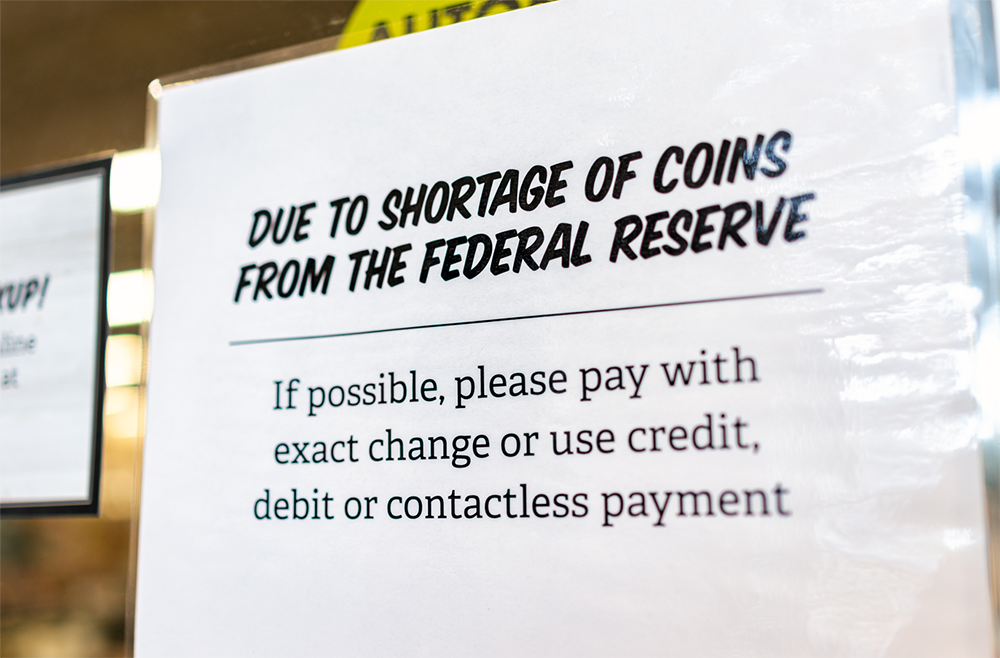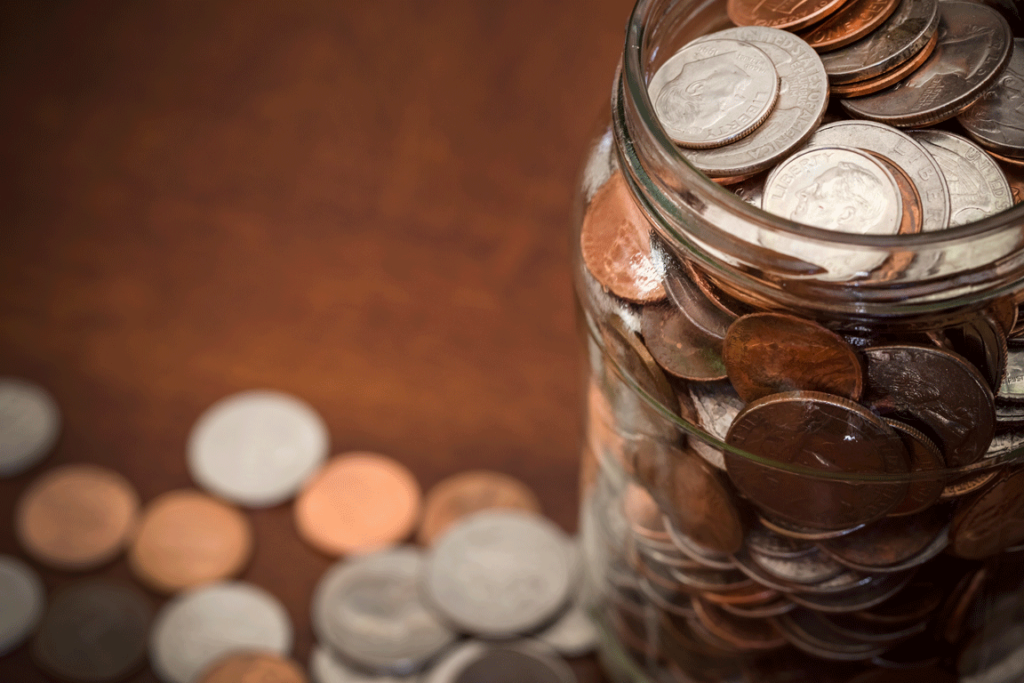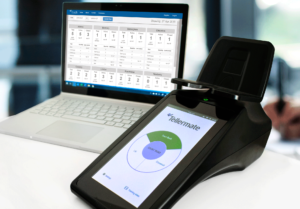 In the US, it’s not uncommon to see stores asking for exact change or warning that they cannot give change due to a “coin shortage.” The actual problem is circulation, and not so much a coin shortage. Call it what you want, but it is impacting customers’ ability to receive change and stores’ ability to keep enough change in the tills.
In the US, it’s not uncommon to see stores asking for exact change or warning that they cannot give change due to a “coin shortage.” The actual problem is circulation, and not so much a coin shortage. Call it what you want, but it is impacting customers’ ability to receive change and stores’ ability to keep enough change in the tills.
In July 2020, it was estimated that there was $48.5 billion in coins in circulation in the US. However, that amount was likely stored away in homes or at the bottom of purses and couch cushions. Coin recycling programs like Coinstar help circulation, but people are only motivated to do that once they have built up a significant stash of coins.
Among developed nations, the “shortage” is not an issue in other countries the way it is in the US. The largest amount of the most widely-used coins in the US is only $0.25, or ¼ of a dollar. Meanwhile, coins worth £2 and £1 are used regularly in the UK, and €1 and €2 coins are used throughout the EU. Consumers find coins worth a larger amount more practical to pay with, and in turn, they circulate better.

The pandemic’s role in the coin shortage is that it paused in-person purchases, which meant less cash and coin was moving throughout the country. In turn, there were less coins to deposit to banks and less coins for banks to give to stores, CIT companies, etc.
The US Mint produced 24% more coins in 2021 as it did in 2020. They have been operating at full capacity since June 2020. Despite the pandemic shutdowns, nearly 2.8 billion more coins were produced in 2020 than in 2019. In July 2020, the Federal Reserve in the US created the U.S. Coin Task Force to address disruptions to coin circulation.
Having a way to quickly recycle coins in a store can help reduce the need to order a large number of coins. It also saves you time on depositing and rolling coins. To do this accurately, coins need to first be counted towards the total of the drawer they are in to get an accurate cash count.
With the Touch cash counter, a manager or store leader can count each drawer in about a minute. They can quickly take the coins above the start bank amount and add them to another drawer that may be below the threshold.

Although coin issues aren’t as prevalent in many areas, keeping coins in circulation is key to ensuring that customers can make cash payments and have payment choice for essential items in every country.
In addition to counting and recirculating coins, developing denominational thresholds based on actual use can help stores determine how many coins they need. Touch Viewer, our cloud-based reporting software, allows businesses to see cash counts from each of their locations. Management or treasury can drill down to individual stores and look at their cash counts over a period and see which coins are moving the most. If patterns are noticed where certain coins aren’t moving, they can reduce the threshold for that denomination for a particular store. Touch Viewer gives businesses the ability to make decisions based on their own data for each location.
In-store cash management solutions are a low-cost way to improve efficiency and reduce fees around cash handling. Let us find the right solution for your business.